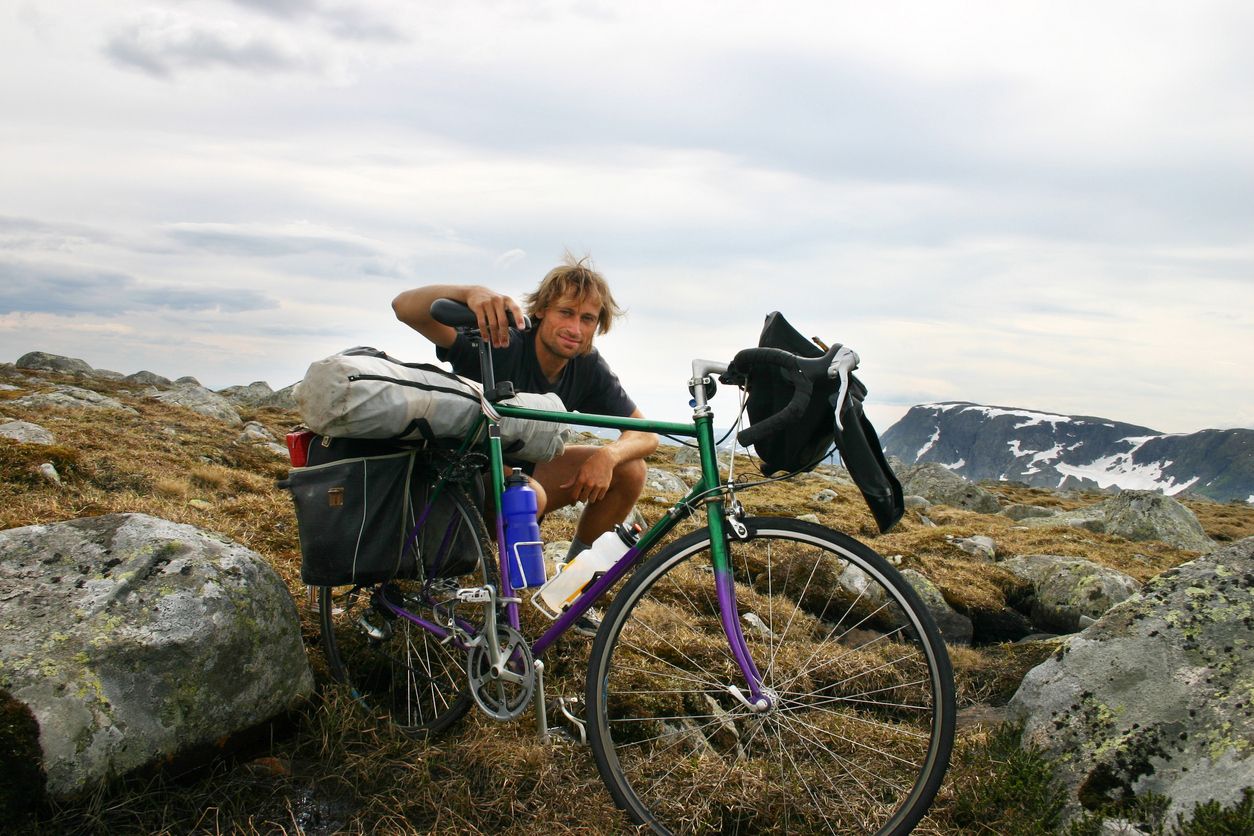A cycle tour is not so much a sporting activity as a lifestyle. Touring by bicycle is the Goldilocks way to discover the planet: not too fast and not too slow. You travel slowly enough to take in your environment, but not so slowly that it takes weeks to make any tangible progress. It’s like road-tripping on two wheels.
The Easiest Way to Go Cycle Touring
Many people overthink cycle tours. So if you simply want to go on a tour and don’t really mind where you go, let me tell you a secret. Step back from your colour coded spreadsheet and look me in the eye. All you need to do to go on a cycle tour is:
- Get a bike – any bike
- Get a bag to carry belongings – any bag
- Start pedalling
Many people will cry in outrage, "But what about...?" But if you're bold enough, it really is that simple. The road to the rest of the world starts from your front door. You do not need a £1200 bike or flashy panniers. Plus the easiest way to transport a bike anywhere is to cycle it there. That’s how many people begin round the world trips: they pedal from home, realise they quite like it and get a bit carried away…
There is no snobbery in cycle touring. You are just as welcome on a £10 bike picked up from the local dump, as on a swanky carbon framed road bike. Cycle tours are as little about the bike as hiking is about the brand of boots you wear. Sure you can save yourself some pain/suffering/inconvenience by your choices, but ultimately if it works for you then that’s what’s most important.
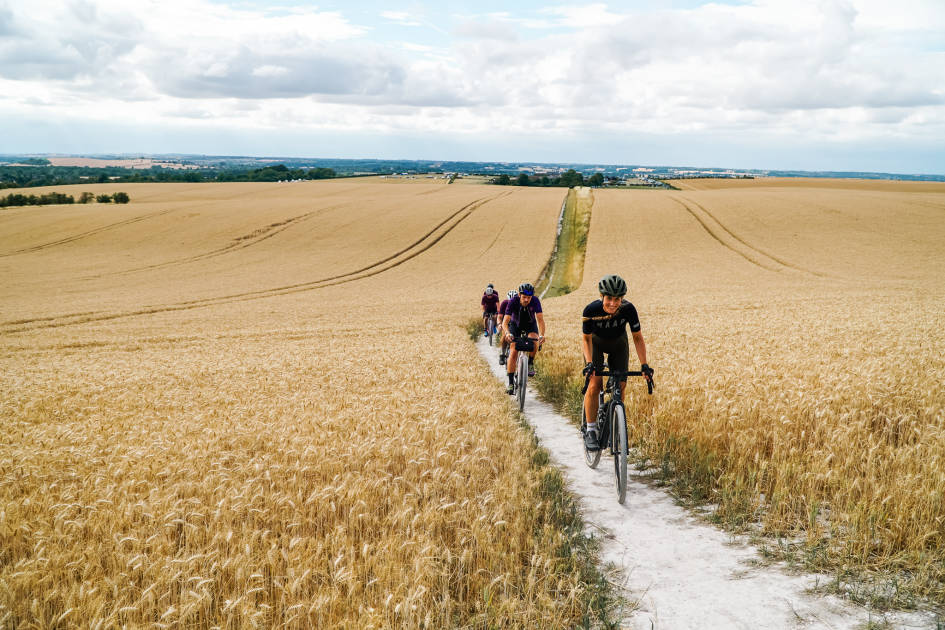
Pick a Style of Cycling Trip
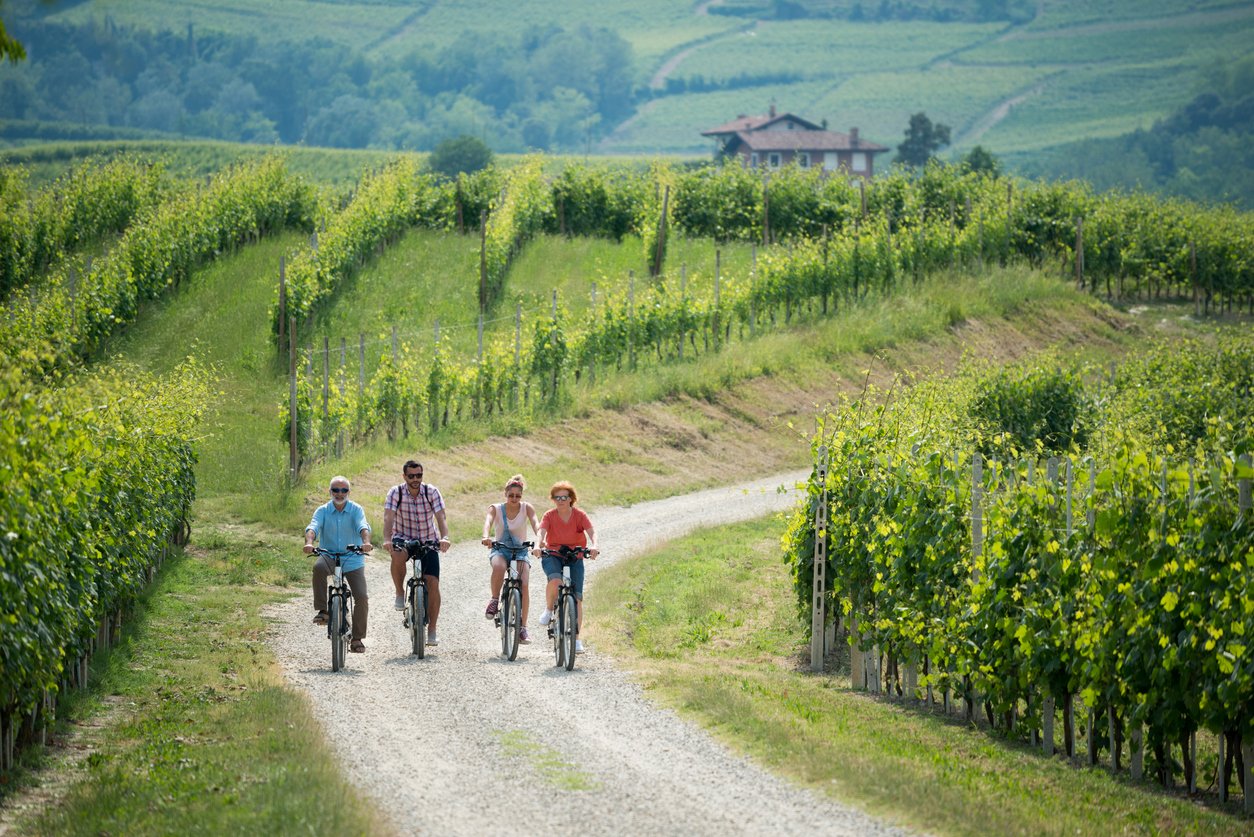
We were going to dive straight into route planning. But actually, there’s something you need to decide about your cycle tour first. What are the things you won’t compromise on, the things that will define your cycle tour? For some people that’s being able to bring their own coffee. For others that’s having a roof over their head each night or the freedom to throw a tent down wherever they get to.
Maybe pick three or four things that are most important to you and that will make your cycle tour what it is. Typically this will be to do with accommodation type, difficulty of terrain, speed or time taken to explore. Once you’ve got that in your mind, we can start talking about the specifics.

Cycle Tour Route Planning
There are lots of options for cycle touring routes. In fact, if you’re prepared to cycle on, or even off, roads your choices are almost infinite. Especially if you are happy on any road in any country – although we do recommend avoiding the brain-shaking experience of riding through a long tunnel on a fast road.
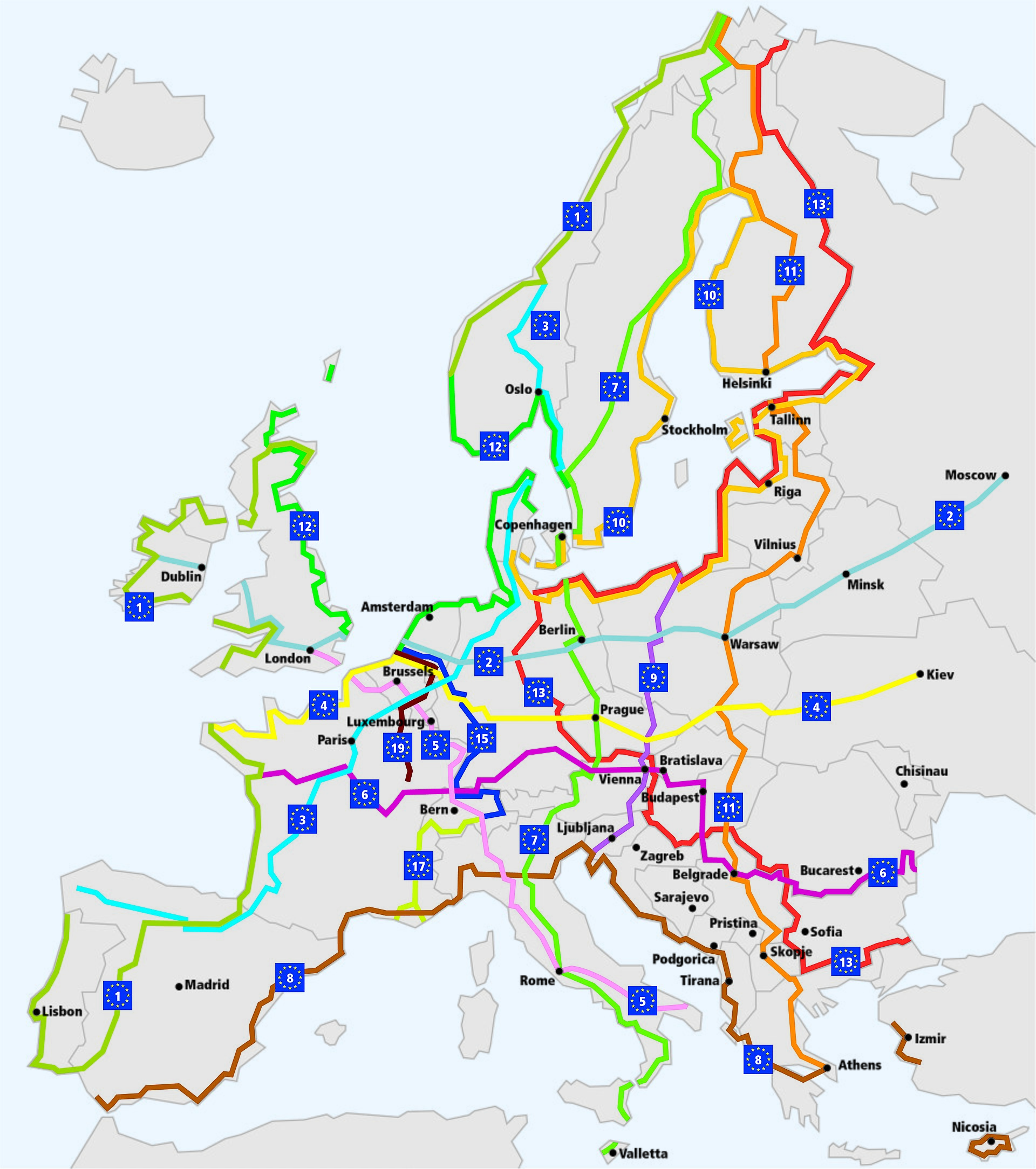
For a place to start in Europe, check out the EuroVelo routes. These international bike routes can take you from the top of Norway to the tip of Greece or Malta. So far there are 19 routes that crisscross across 42 countries and are (usually) very well signposted. You don’t even have to navigate! Except when you’ve been merrily riding along, missed the signpost hidden in a hedge and ended up in a factory car park.

For UK based cycle tours, have a look at 7 of the Best Long-Distance Cycle Routes in the UK to some bike trip inspiration. Or go freestyle on the Sustrans Network. Adventure Cycling is the go-to place to start for information about US cycle tour routes. As for the rest of the world, a bit of Googling should get you on track. You’d be amazed how many people have cycled around the world and written all about it. Plus each country will have its own set of local bike routes, with more or less infrastructure.
The Itinerary
Okay, that’s pre-made routes. Maybe you’ve picked one, maybe you’re freestyling. The next big question is usually, “I have X days to cycle, how far can I go?” A rule of thumb for an average cycle tour of average flatness (and average fitness cyclist!) is 60km per day. That gives you plenty of room for shopping, getting lost, finding a place to sleep and everything else.
Remember cycle touring is so much less about speed, more about a way of life. If you’ve got a need for speed, you can go further than 60km. If you’ve overpacked and are bemoaning the three pairs of jeans and a MacBook, you may find yourself choosing the more leisurely pace.
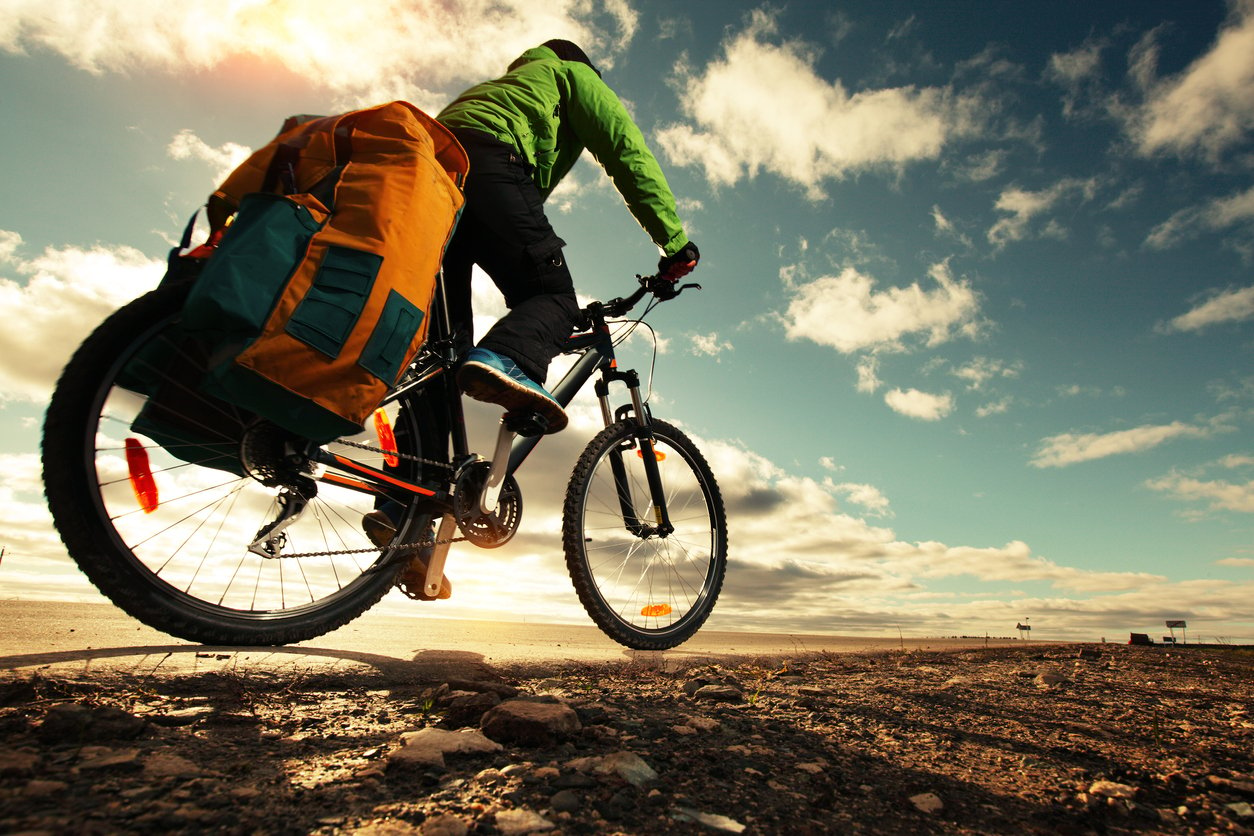
Many cycle tourers take a tent to give them the flexibility of having an off day. You’re not as fixed to your schedule if you can simply sleep behind a hedge. Of course it is very possible to pre-book all of your accommodation to avoid having to hunt for it as you go – particularly guesthouses in popular areas during high season. But this can become stressful if you’re always pushing to reach your next destination – or boring if you’re cycling much quicker than you’d thought.

Cycle Tour Packing and Bicycles
As we’ve said before, you don’t need a fancy bike to start a cycle tour. Sure, it helps to know that your bike’s not going to fall apart on day one, but as long as you can deal with fixing it you can take pretty much anything. That’s a sentence worth thinking about: wheel sizes and parts are not standard to all countries. If you’re cycling in remote areas it can be a long haul to get to a bike shop. Take the right amount of spares and skills to make sure a breakage is a type-two-fun adventure, not a disaster.
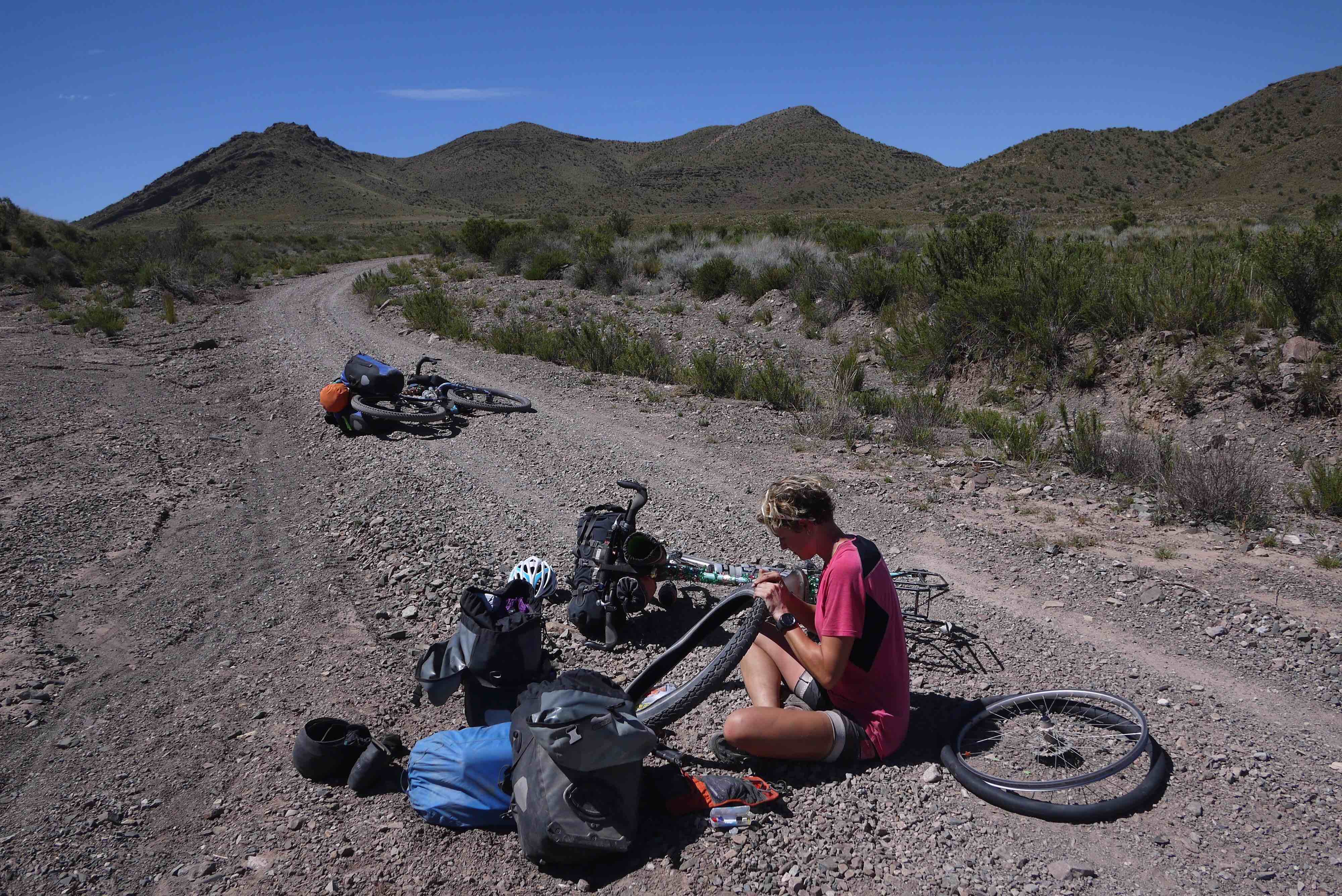
If you can’t decide on a bike, or don’t have one, renting might be an option. It also eliminates the faff of having to get your bike to the start of your cycle tour – particularly if you are flying. There are some useful tips about this in 7 Things to Remember for Your Next Cycling Adventure.
Personally, I’ve cycled the Danube on a hire bike, and from Salzburg to the Adriatic Sea. Both are on EuroVelo routes but the Danube is very popular, so it was possible to simply drop the bikes off at the end of the route. Whereas, after triumphantly reaching the Adriatic Sea, we had to turn around and take the train back to Salzburg. Slightly disheartening to undo several weeks’ worth of cycling in a day by train.

One last note on bicycle choice: you should really think about the terrain you’re going to encounter when you pick a bike. Although a standard touring bike will be able to cope with most surfaces, it’s not going to like gravel tracks or muddy passes. You might also be glad of a bit of suspension or several options for hand positions on handlebars. If you’re going for a month or more, these small things really start to grate.
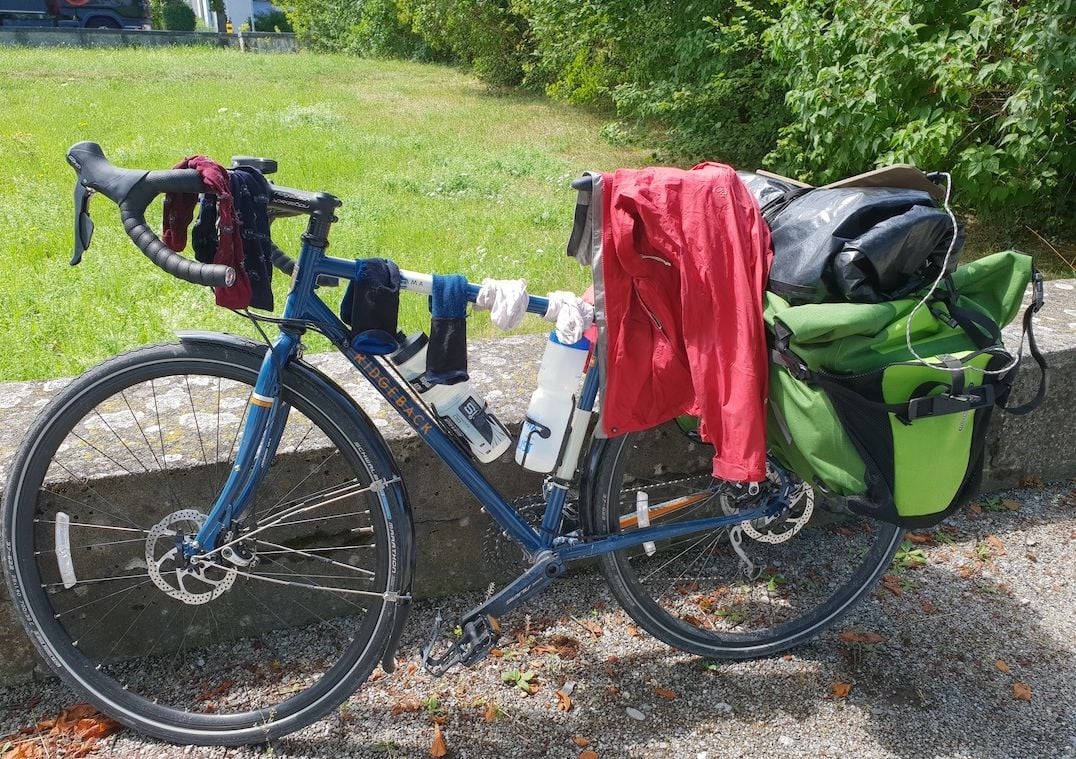
With regards to carrying kit, there’s everything from panniers and rucksacks, to cooler boxes and plastic containers with a saw taken to them! What’s most important is that they can fit all your stuff in them and that they can be attached to the bike.
One of the best ways to spot someone on a cycle tour is that they have all sorts of stuff hanging off the back of their bicycle. My favourites so far have to be a 12-string guitar and a dog in a trailer. Just make sure you're not so back-heavy that you break a spoke or start doing wheelies uphill!
Want to go cycle touring but would rather skip the logistics? Check out our Remote Rides collection. All the fun, none of the faff.


